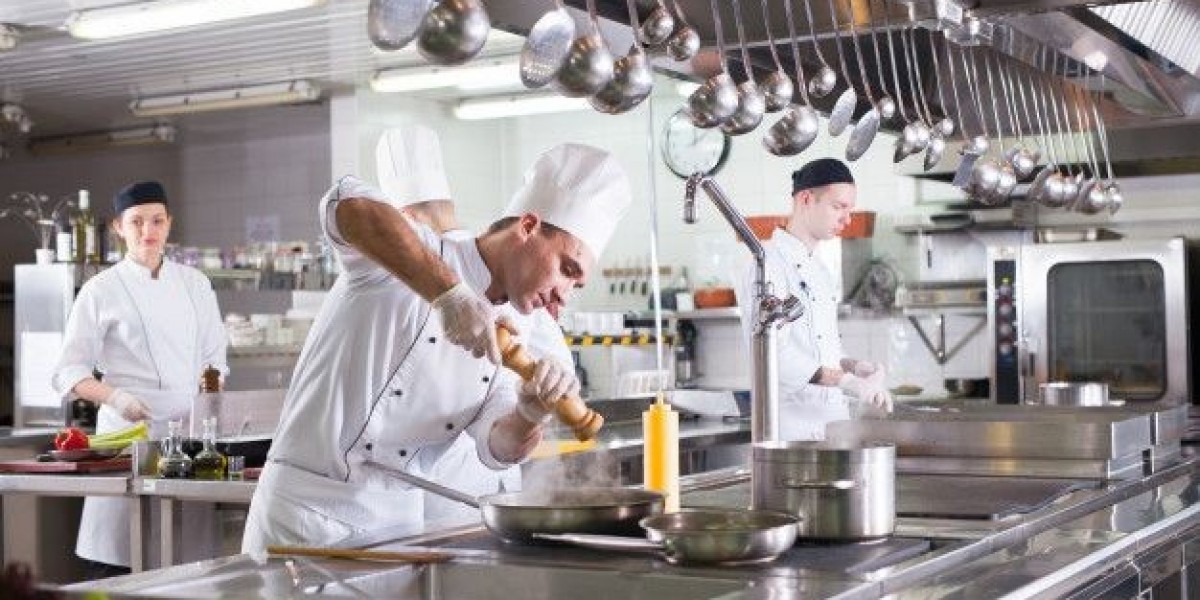Starting a new food business is an exciting venture filled with opportunities and challenges. One of the most critical steps in launching a successful restaurant is ensuring that the right equipment is in place. Having a comprehensive checklist helps streamline operations, improve efficiency, and maintain high standards of food safety and service. From kitchen essentials to front-of-house tools, every piece of equipment plays a role in shaping the overall customer experience.
This article provides a complete restaurant equipment checklist for new food businesses while highlighting the importance of choosing the right restaurant equipment supplier and investing in reliable stainless steel fabrication solutions.
Why a Restaurant Equipment Checklist is Essential
Before diving into the checklist, it is important to understand why such planning is crucial:
Operational Efficiency: The right tools and appliances ensure that kitchen staff can work quickly and effectively.
Consistency in Quality: Proper equipment helps maintain uniformity in food preparation and service.
Safety Compliance: Health and safety regulations often require specific types of equipment and materials, such as stainless steel work surfaces.
Cost Management: Investing in the right items from the start reduces unnecessary expenses and frequent replacements.
With these benefits in mind, let’s explore the categories of essential equipment for a new restaurant.
1. Cooking Equipment
Cooking appliances are the backbone of every restaurant kitchen. They determine the type of menu that can be offered and directly affect the speed of service.
Ranges and Ovens: Gas or electric ranges, convection ovens, and combi ovens are must-haves for baking, roasting, and cooking a wide variety of dishes.
Grills and Griddles: For restaurants serving grilled meats, vegetables, or breakfast items, these appliances are indispensable.
Deep Fryers: A staple in most commercial kitchens, fryers help prepare fast foods like fries, chicken, or seafood.
Microwaves and Induction Cookers: Useful for quick heating and small-scale cooking.
Working with a restaurant equipment supplier ensures access to commercial-grade appliances that can handle high volumes of food preparation.
2. Refrigeration and Storage Units
Proper storage is essential for food safety and quality. Commercial refrigeration keeps ingredients fresh and minimizes waste.
Walk-In Coolers and Freezers: Ideal for restaurants handling large inventories.
Reach-In Refrigerators and Freezers: Convenient for quick access in busy kitchens.
Undercounter Refrigeration Units: Space-saving solutions that fit under prep tables.
Ice Machines: Necessary for beverages, food preparation, and presentation.
These items are vital in maintaining hygiene and meeting food safety standards.
3. Food Preparation Equipment
Food prep tools are essential for efficiency and precision. Investing in high-quality prep equipment reduces labor costs and increases productivity.
Mixers: Planetary or spiral mixers for baking and dough preparation.
Food Processors: For chopping, slicing, and blending ingredients.
Blenders and Juicers: Important for beverages, sauces, and dressings.
Slicers and Peelers: Streamline repetitive preparation tasks.
Stainless steel prep tables with built-in storage compartments allow chefs to work in an organized and sanitary manner. Custom stainless steel fabrication can optimize layouts, ensuring workstations meet the exact needs of the kitchen.
4. Stainless Steel Workstations and Fabrication
When it comes to durability, hygiene, and compliance with health codes, stainless steel stands out as the material of choice. Custom stainless steel fabrication allows restaurants to design workstations, shelving, and counters that fit seamlessly into their kitchens.
Prep Tables: Stainless steel surfaces are non-porous, easy to clean, and resistant to corrosion.
Sinks and Dishwashing Stations: Essential for maintaining hygiene, with options like three-compartment sinks for washing, rinsing, and sanitizing.
Shelving Units: Durable and long-lasting, suitable for dry storage and refrigerated environments.
Custom Fabrication: Tailor-made counters, racks, and cabinets to fit unique kitchen layouts.
Investing in stainless steel ensures longevity and compliance with food safety regulations, making it a smart choice for any new food business.
5. Beverage Equipment
If your restaurant offers beverages, investing in the right machines is vital.
Coffee Makers and Espresso Machines: Essential for cafés, breakfast places, and restaurants that serve hot drinks.
Juice Dispensers: For freshly squeezed or pre-prepared juices.
Soda Fountains and Beverage Coolers: Useful in fast-paced dining settings.
A reliable restaurant equipment supplier can recommend machines suited to your expected volume and type of service.
6. Cleaning and Sanitation Equipment
Cleanliness is non-negotiable in the food industry. Proper sanitation equipment helps maintain hygiene standards and protect the reputation of the business.
Dishwashers: High-capacity units for quick cleaning of dishes and utensils.
Glass Washers: Specialized machines for delicate glassware.
Waste Disposal Units: Including trash compactors and recycling bins.
Handwashing Stations: Strategically placed to encourage staff compliance with hygiene protocols.
Most of these stations can be built using stainless steel fabrication, ensuring easy cleaning and long-term durability.
7. Front-of-House Equipment
The dining area plays a significant role in shaping customer experience. Comfortable and functional equipment ensures smooth service.
Tables and Chairs: Suitable for the restaurant’s theme and comfort needs.
Serving Stations: For cutlery, condiments, and service supplies.
POS Systems: Modern point-of-sale systems streamline billing and order management.
Tableware: Plates, glasses, utensils, and serving dishes tailored to the cuisine.
Even front-of-house stations may incorporate stainless steel shelving or counters for durability and aesthetics.
8. Safety Equipment
Safety must always be a top priority in restaurant operations.
Fire Extinguishers: Specifically rated for kitchen fires.
First Aid Kits: For immediate response to minor injuries.
Ventilation and Exhaust Systems: Essential for maintaining air quality and reducing fire hazards.
Non-Slip Mats and Safety Signage: Reduce accidents in high-traffic areas.
Partnering with a trusted restaurant equipment supplier ensures compliance with local safety standards and regulations.
9. Smallwares and Utensils
Often overlooked but equally important, smallwares keep day-to-day operations running smoothly.
Pots, Pans, and Baking Trays: Commercial-grade cookware to handle high usage.
Knives and Cutting Boards: Essential for safe and efficient food preparation.
Measuring Tools: For accurate portioning and consistency.
Storage Containers: Airtight and labeled containers for dry goods, spices, and prepared items.
Durable stainless steel utensils and containers are recommended for their hygiene and resilience.
10. Choosing the Right Restaurant Equipment Supplier
Selecting the right restaurant equipment supplier is one of the most critical decisions for new food businesses. The right partner provides:
Quality Assurance: Access to commercial-grade equipment that meets industry standards.
Customization: Options for stainless steel fabrication to fit unique kitchen designs.
After-Sales Support: Installation, maintenance, and repair services.
Competitive Pricing: Cost-effective solutions that align with your budget.
By carefully evaluating suppliers, restaurant owners can ensure they receive reliable equipment and long-term value.
Final Thoughts
Launching a new food business requires careful planning and investment in the right tools. A comprehensive restaurant equipment checklist ensures that every aspect of operations—from food preparation to customer service—is covered.
From heavy-duty cooking appliances and refrigeration units to custom stainless steel fabrication workstations, every item contributes to efficiency, safety, and quality. Partnering with a reliable restaurant equipment supplier further guarantees that new businesses start strong with equipment built for durability and performance.
By following this checklist and prioritizing smart investments, new restaurant owners can lay a strong foundation for success, ensuring smooth operations and a memorable dining experience for customers.








